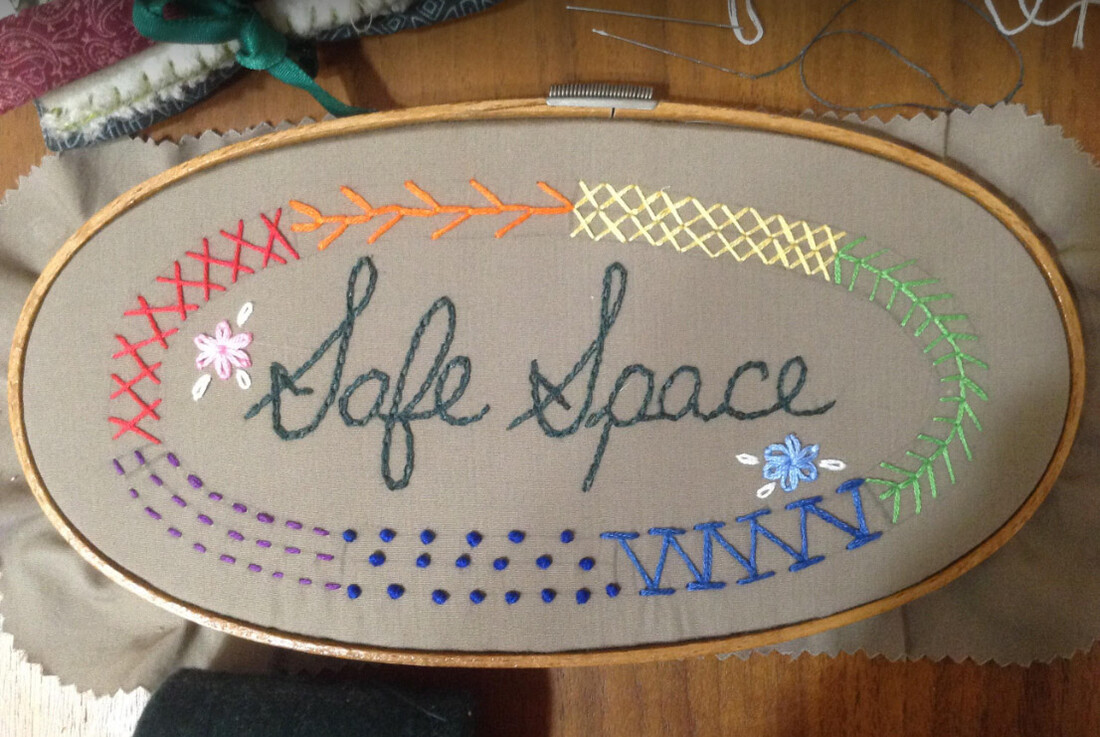
Ask Me My Secret: Interpreting Queer History Themes at Fort Edmonton Park
The interpreters and researchers at Fort Edmonton Park have never shied away from controversial and difficult topics while probing through the myriad of communities, topics, and stories that make up Edmonton’s rich and complex history. In 2016, a small group of staff came together with the goal of researching material to facilitate the inclusion of gender, sexuality, diversity, and queer history into the interpretative narratives at Fort Edmonton Park.
Many long hours were spent scouring archival records and external resources, and consulting with members of Edmonton’s LGBTQ community to explore a working theme of “Individual Albertans of the past have always challenged traditional norms of gender and sexuality.” This work resulted in a 99 page pilot study and a prototype for a parkwide tour, “Tales from a Queer Alberta”. Recognizing the immense scope of this project, a SCIP (Serving Communities Internship Program) was developed and coordinated by Core Programs, and elements of Indigenous history were added. Over the next four years, SCIP interns along with FEP staff and contributions from members of Edmonton’s LGBTQ community, compiled a comprehensive research document: “An Introduction to Gender, Sexuality, and Queer History to 1929”.
Just a few of the themes covered include Homosexuality in the Fur Trade, Colonization and Sexuality, Women’s Roles and Sexualities, Victorian and Edwardian Ideals of Gender and Sexuality, Masculinity and Western Canada, and The Performance and Performability of Gender. The document also contains numerous documented case studies of notable individuals such as Lisette Landry, Corinne/Jack Laboucane, and Isobel ‘Jack’ May whose stories strongly contribute to the research.
The interpreters at Fort Edmonton Park are proud to continue this important and valuable work, and we want to share it with you! Even though great strides have been made in recent years to bring inclusion, gender and diversity issues to the public eye, we recognize that conversations about this topic can be difficult, and we are sensitive to the fact that they can be awkward to initiate. With this in mind, we have some discreet ways to help you approach us for a chat!
If you’re interested in expanding your awareness of these diverse historical topics, just look for an interpreter wearing an “Ask Me My Secret” button on their lapel. You might also look closely at some of the embroidery projects displayed on the tables in some of our exhibits. These are your signals that the interpreter at that location is prepared and willing to share their knowledge and connect their history to our present in a safe, non-judgemental and inclusive environment.
One of our interpreters has chosen to take on a role as dual gender character Evelyn/Edwin Ridgeway on 1885 Street this year. When asked why taking on this role was important to them, they responded, “I get to interpret both sides of the perspectives, and having two options makes me feel more comfortable. I hope to be a model for other interpreters so they can experience it in their own unique way”. Their response is a clear example of a commitment to inclusivity and diversity in our interpretation!
Edwin Ridgeway // Evelyn Ridgeway // Ask Me My Secret Pin
So, whether you’re wanting to become less locked into gender role expectations and stereotypes, seeking to learn from those with whom you might not have previously engaged with, or even just looking for a way to open yourself up to a wider range of people…Go ahead… Ask Me My Secret!
Writers Note:
Our contemporary interpreters would like to acknowledge the hard work and commitment of previous and current staff for paving the way for the opportunity to allow us to share this an important part of history with our visitors.